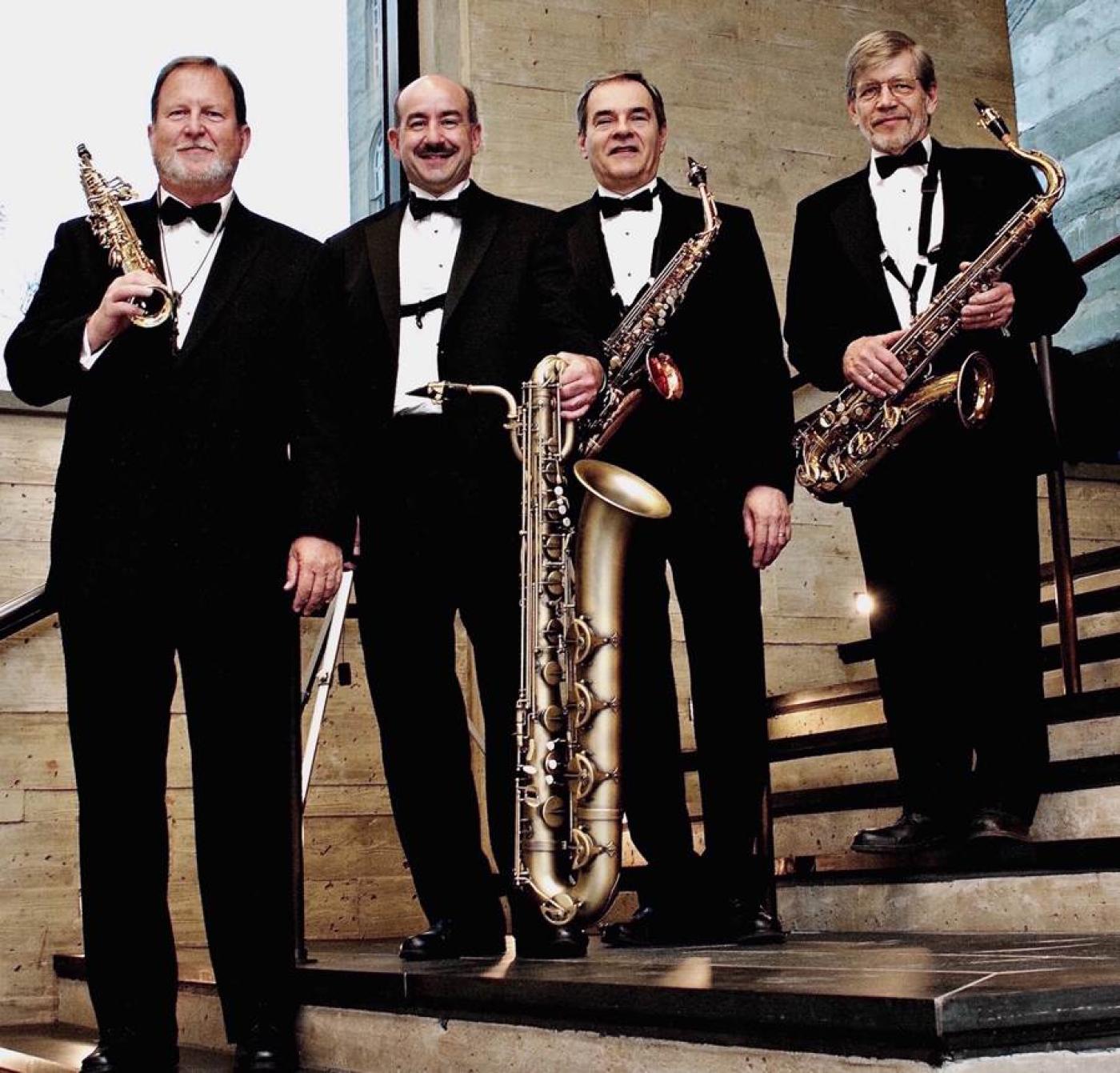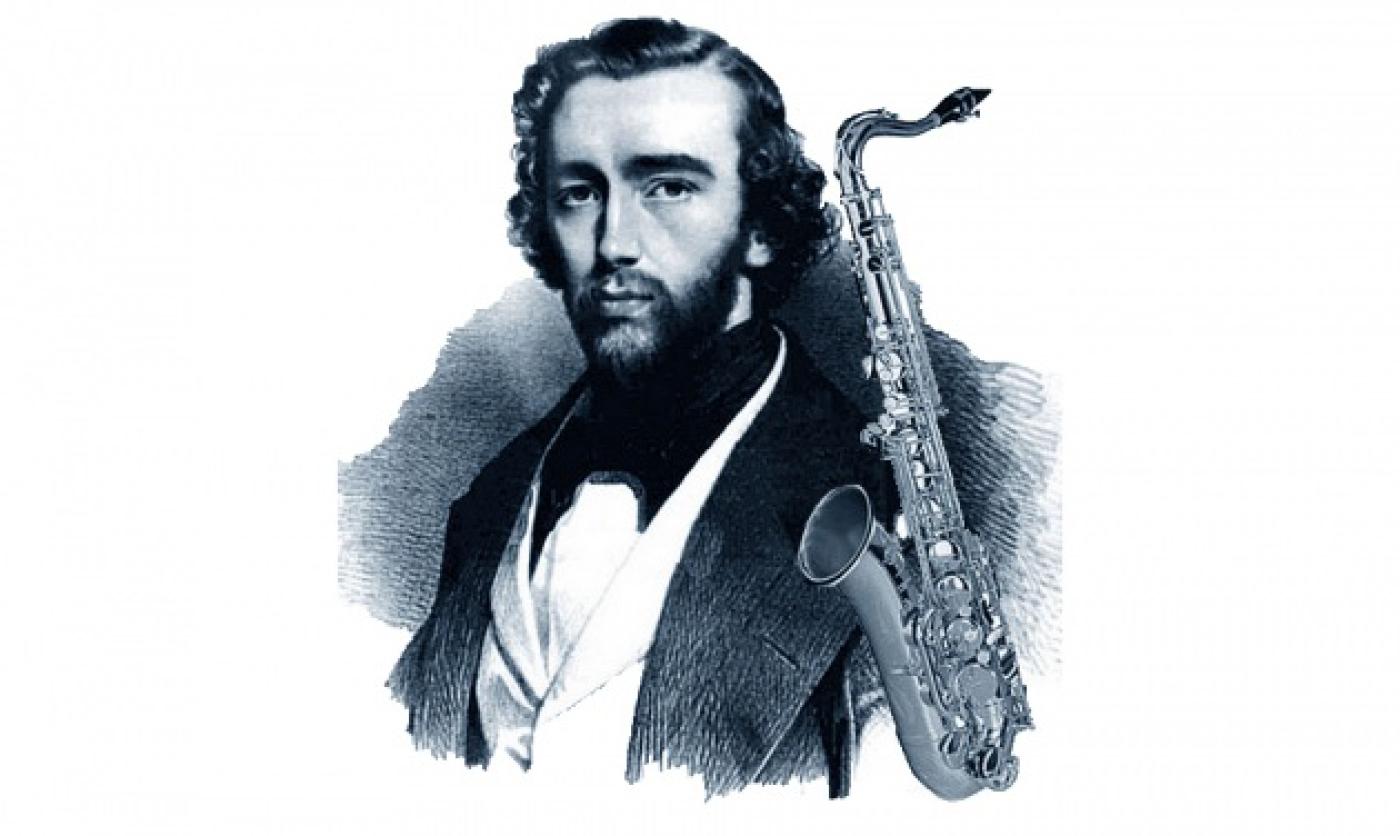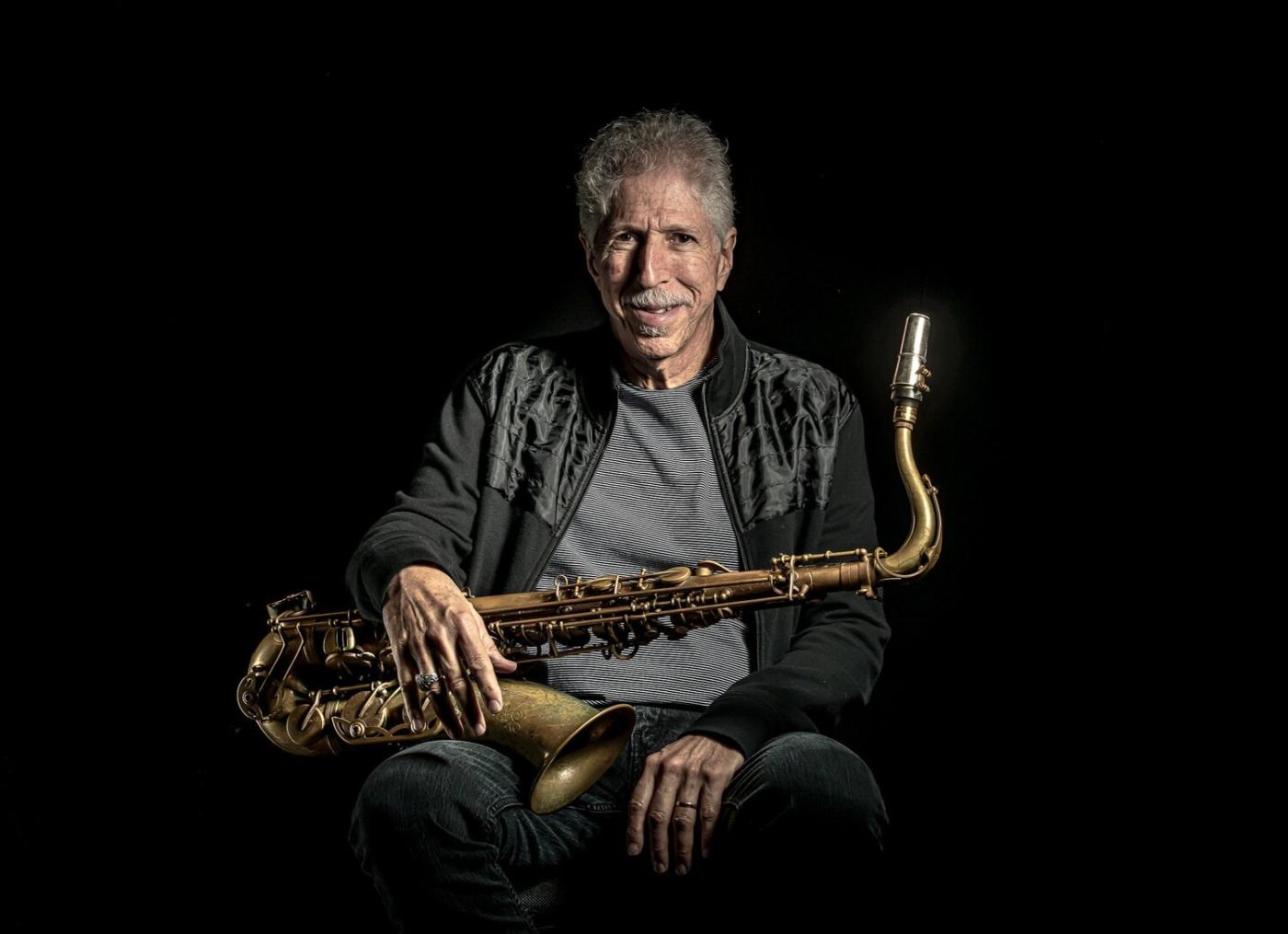On January 28 at 9:00 PM on WETA Classical, the Washington Saxophone Quartet (WSaxQ) will be featured on Center Stage from Wolf Trap. Over the years, WSaxQ performed twice at the Barns at Wolf Trap.
This program is a wonderful opportunity to present something new to many listeners. In fact, in the world of classical music, the saxophone quartet is both a rarity and mysterious. The rareness of 4 saxophones (soprano, alto, tenor and baritone) in concert is perhaps easy to understand. When was the last time you went to a program featuring 4 saxophones? When the Washington Saxophone Quartet performs, I always ask the audience, “how many have ever heard a saxophone quartet”? A few hands go up. They are very familiar with the instrument – it’s the most popular band instrument in schools and its place in jazz and popular music is well known – but the idea of 4 saxophones performing classical music in recital is not something that most people are aware of or even imagine.
And that’s where the idea of being mysterious comes in to play. We often hear after a concert questions about the sounds these instruments produce. Our quartet, like many saxophone quartets, try to offer a wide spectrum of the pieces from all periods in music and many genres. At a typical concert we might perform a work from the renaissance, and baroque periods, often composed for brass, strings or organ. So, when we arrange that music for saxophone quartet, rehearse and perform it, we keep in mind that the sound we’re trying to achieve must come close to the original instrument(s) that it was composed for in the first place. When it works well, audience members say things like, “I heard a brass group”… or … “It sounded like an organ”… or … “I heard a string quartet” … and … (our favorite) “I had no idea a saxophone could sound like that!” That last comment is the one we hear most often. For the Belgian inventor of the saxophone, Adolphe Sax, that’s exactly what he envisioned. It’s an instrument capable of a wide range of sounds.
With his saxophone design – it’s conical shape with a brass body and a woodwind mouthpiece – Sax hoped that the instrument could blend with the strings, brass, and woodwinds in the orchestra. Or it could easily compete with the big sounds of the military band. And, the different sizes and ranges of saxophones are capable of sounding like a chorus of voices, an organ, a string quartet, or a brass band.
On this Wolf Trap recital we start with a little history of the instrument. It’s the Finale from the very first original piece for saxophone quartet, composed by a Jean Baptiste Singelee, a fellow professor at the Paris Conservatory and friend of Aldophe Sax. It comes from 1857, just over 10 years after the invention of the instrument. Here is our YouTube performance from another recital:
Our next music leaps into the 21st century. The Quartet #3 by Bob Mintzer comes from 2001. Mintzer is a longtime jazz player with the group, Yellowjackets, and a professor of saxophone at the University of Southern California. He also loves to compose for saxophone quartet. This particular piece is full of humor as well as beauty. The titles of the three movements offer a clue of how much fun this music offers: “Contraption” sounds a like an energetic, often confused conversation. “Serenity” sounds just like the title. And finally, “Jubilation” is a rollicking conclusion. The entire work is a delightful surprise for the ear from beginning to end!
We included a work by Jean Absil, a Belgian composer who lived from 1893 to 1974 and taught composition at the Brussels Conservatory. Like the Paris Conservatory, Brussels was a focal point for the study of saxophone and with that came repertoire for saxophone quartets. Absil’s 1956 composition “Suite of Popular Romanian Themes” is a wonderful example of someone who knows the sound of four saxophones and can create something that highlights the capabilities of each instrument and the blend of all four … high to low. This YouTube link is our performance from some years ago at Longwood University in Virginia:
The next two pieces – Adagio for Strings and Songs for Tony – on this Center Stage from Wolf Trap program are linked together as an example of the emotional qualities of music, in this case anger and sorrow. Songs for Tony was written by Michael Nyman when he learned the death of a dear friend who had been struggling with cancer. And this movement displays how a composer can create the deeply felt anger one experiences in the early stages of grief. Samuel Barber never envisioned that his Adagio would be used to accompany profound sadness at a funeral. But the qualities of this beautiful piece have become the sound so closely associated with those heartfelt moments, Barber might be very surprised.
The final piece is simply a nice example of how a delicate guitar piece by Pat Metheny can work so well for a saxophone quartet, and the arrangement is by our own baritone saxophone player, Rick Parrell.
While the saxophone quartet as a classical ensemble was rare when we began our quartet in 1976 and is still finding its place, the world of quartet playing has exploded in quantity and quality. The dozens of younger college groups have secured their place by winning prestigious awards chamber music competitions. As professional groups have evolved, virtually ever major city in the United States has a saxophone quartet. The Washington, DC area has many quartets basically because of the “special bands” of the military. In fact, this metropolitan area has the greatest number of professional classically trained saxophonists of any city in the country. We’re pleased to have been part of that growth and continue to present surprising sounds to our audiences. Visit our website for more information: www.wsaxq.com
Tune in to WETA Classical Saturday January 28 at 9:00 PM for the Washington Saxophone Quartet on Center Stage from Wolf Trap.
PBS PASSPORT
Stream tens of thousands of hours of your PBS and local favorites with WETA+ and PBS Passport whenever and wherever you want. Catch up on a single episode or binge-watch full seasons before they air on TV.


